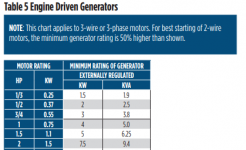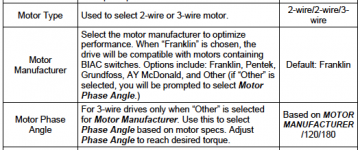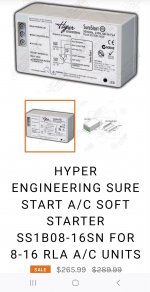fastline
Senior Member
- Location
- midwest usa
I will try to keep this simple for clarity. This particular project is personal, so I want to try a few things. We have a huge remote garden that will be watered off a water well, fed by a generator for now, but will end up moving this to solar. Inrush on these darn pumps has to be considered. They start hard. I am really looking for a better solution like a 3P pump motor and VFD, but those are nearly impossible to find, or very expensive.
Right now we will have to drive a 1P, 1HP, 2 wire pump. Already tested in the field at 9.6A/240V at load, and 40A inrush.
All this being said, I would like to employ an RV type generator and they are 120V only.
Some time back, we had a discussion here about slaving a buck/boost transformer rather than a true isolation transformer. ?? Basically feeding the 120V in the primary as a split phase config, then pull 240V off that primary?
By the math, it would seem you would need to double the size of the buck/boost to account for driving only one primary coil at 120V? I am not sure how inrush may play with these?
Right now we will have to drive a 1P, 1HP, 2 wire pump. Already tested in the field at 9.6A/240V at load, and 40A inrush.
All this being said, I would like to employ an RV type generator and they are 120V only.
Some time back, we had a discussion here about slaving a buck/boost transformer rather than a true isolation transformer. ?? Basically feeding the 120V in the primary as a split phase config, then pull 240V off that primary?
By the math, it would seem you would need to double the size of the buck/boost to account for driving only one primary coil at 120V? I am not sure how inrush may play with these?




